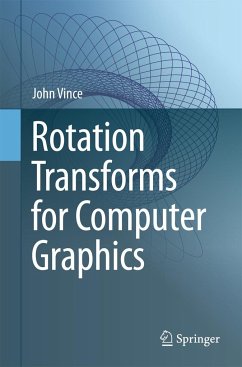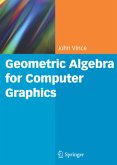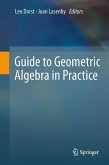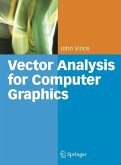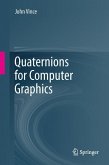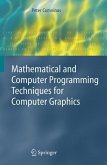The book provides a comprehensive description of mathematical techniques for rotating points and frames in 2D and 3D. Such transforms are notoriously difficult to visualize which is why the book contains a large number of illustrations.
Rotation transforms are used everywhere in computer graphics from rotating pictures in editing software, to providing an arbitrary view of a 3D virtual environment. Although the former is a trivial operation, the latter can be a challenging task.
Rotation Transforms for Computer Graphics covers a wide range of mathematical techniques used for rotating points and frames of reference in the plane and 3D space. It includes many worked examples and over 100 illustrations that make it essential reading for students, academics, researchers and professional practitioners.
The book includes introductory chapters on complex numbers, matrices, quaternions and geometric algebra, and further chapters on how these techniques are employed in 2D and 3D computer graphics. In particular, matrix and bivector transforms are developed and evaluated to rotate points in a fixed frame of reference, and vice versa.
Rotation transforms are used everywhere in computer graphics from rotating pictures in editing software, to providing an arbitrary view of a 3D virtual environment. Although the former is a trivial operation, the latter can be a challenging task.
Rotation Transforms for Computer Graphics covers a wide range of mathematical techniques used for rotating points and frames of reference in the plane and 3D space. It includes many worked examples and over 100 illustrations that make it essential reading for students, academics, researchers and professional practitioners.
The book includes introductory chapters on complex numbers, matrices, quaternions and geometric algebra, and further chapters on how these techniques are employed in 2D and 3D computer graphics. In particular, matrix and bivector transforms are developed and evaluated to rotate points in a fixed frame of reference, and vice versa.
From the reviews:
"This book is devoted to rotation transforms applied in computer graphics. ... The aim of the book is to take the reader through the important ideas and mathematical techniques associated with rotation transforms, without becoming too pedantic about mathematical terminology. ... is presented in an accessible fashion, with many examples and figures explaining the theory in an intuitive way. It is suitable for students, academics, researchers and professional practitioners who are interested in making 2D or 3D scenes and animations." (Agnieszka Lisowska, Zentralblatt MATH, Vol. 1221, 2011)
"The basic mathematics that underlies rotations in 2D or 3D graphics is straightforward. Making sure that the details are right can be maddening. The author of this book successfully brings order and method to the subject. ... The book is a discussion of mathematical underpinnings. ... This is a fine volume that should be of use to anyone who actually writes graphics (or robotics) libraries, and also to those who use animation packages and want to understand what is happening under the hood." (Paul LaFollette, ACM Computing Reviews, September, 2011)
"This book is devoted to rotation transforms applied in computer graphics. ... The aim of the book is to take the reader through the important ideas and mathematical techniques associated with rotation transforms, without becoming too pedantic about mathematical terminology. ... is presented in an accessible fashion, with many examples and figures explaining the theory in an intuitive way. It is suitable for students, academics, researchers and professional practitioners who are interested in making 2D or 3D scenes and animations." (Agnieszka Lisowska, Zentralblatt MATH, Vol. 1221, 2011)
"The basic mathematics that underlies rotations in 2D or 3D graphics is straightforward. Making sure that the details are right can be maddening. The author of this book successfully brings order and method to the subject. ... The book is a discussion of mathematical underpinnings. ... This is a fine volume that should be of use to anyone who actually writes graphics (or robotics) libraries, and also to those who use animation packages and want to understand what is happening under the hood." (Paul LaFollette, ACM Computing Reviews, September, 2011)

